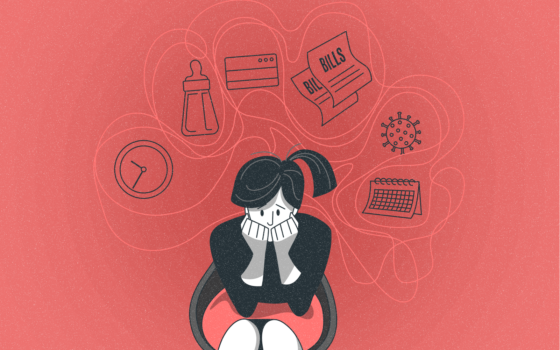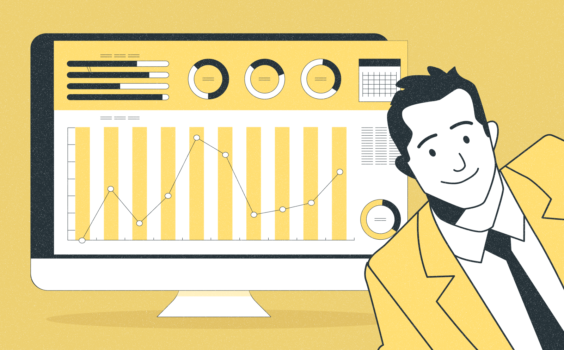What Is Client Retention Rate?
Client Retention Rate (CRR) measures the percentage of customers a company retains over a specific period. It's a crucial metric for assessing customer loyalty and business health. A high CRR often correlates with increased profitability and sustainable growth. Key points: • Formula: CRR = ((CE-CN)/CS) x 100 • Industry benchmark: Varies, but 90%+ is often considered excellent • Impacts: Customer Lifetime Value, revenue stability, and brand reputation • Improvement strategies: personalized service, loyalty programs, regular feedback collection
Client Retention Rate (CRR) is a vital metric in the business world, particularly for service-based industries and subscription models. It provides invaluable insights into a company's ability to maintain long-term relationships with its customers, which directly impacts revenue stability and growth potential.
Understanding Client Retention Rate
At its core, CRR is the percentage of customers a business retains over a specific period, typically measured annually. It's a reflection of customer satisfaction, loyalty, and the overall value proposition of a company's products or services.
The Formula
The formula for calculating Client Retention Rate is:
CRR = ((CE - CN) / CS) x 100
Where:
CE = Number of customers at the end of the period
CN = Number of new customers acquired during the period
CS = Number of customers at the start of the period
This formula provides a percentage that represents the proportion of existing customers who remained with the company during the measured period.
Importance in Business Strategy
Understanding and optimizing CRR is crucial for several reasons:
- Cost-effectiveness: Retaining existing customers is generally more cost-effective than acquiring new ones.
- Predictable revenue: High retention rates lead to more stable and predictable revenue streams.
- Customer Lifetime Value (CLV): Retained customers often have a higher CLV, contributing more to long-term profitability.
- Brand advocacy: Satisfied, long-term customers are more likely to recommend the business to others.
- Competitive advantage: High retention rates can be a strong differentiator in crowded markets.
Industry Benchmarks and Variations
Client retention rates can vary significantly across industries and business models. While there's no universal "good" retention rate, here's a general guideline:
| Retention Rate | Performance Level | Typical Industries |
| 95%+ | Excellent | B2B SaaS, Professional Services |
| 85-95% | Good | E-commerce, Retail Banking |
| 75-85% | Average | Telecom, Insurance |
| <75% | Needs Improvement | Fast Food, Seasonal Businesses |
It's crucial to note that these benchmarks are generalizations. Each company should establish its own baseline and improvement goals based on its specific industry, business model, and customer base.
Factors Influencing Client Retention Rate
Several factors can impact a company's client retention rate:
- Product/Service Quality: The cornerstone of customer satisfaction and loyalty.
- Customer Service: Responsive and effective support can significantly boost retention.
- Onboarding Process: A smooth start to the customer relationship sets the tone for long-term engagement.
- Communication: Regular, meaningful interactions keep customers engaged and informed.
- Pricing Strategy: Fair and transparent pricing builds trust and reduces churn.
- Competitive Landscape: Strong alternatives in the market can impact retention rates.
- Brand Perception: A positive brand image contributes to customer loyalty.
Strategies to Improve Client Retention Rate
Improving CRR requires a multifaceted approach. Here are some effective strategies:
1. Personalization
Tailoring experiences to individual customer needs can significantly boost retention. This could involve personalized product recommendations, customized communication, or adaptive service levels.
2. Loyalty Programs
Well-designed loyalty programs can incentivize customers to stay. These might include:
- • Points systems
- • Tiered rewards
- • Exclusive access to new products or services
- • Partner benefits
3. Proactive Customer Service
Anticipating and addressing customer needs before they become issues can dramatically improve satisfaction and retention. This might involve:
- • Regular check-ins
- • Predictive maintenance
- • Proactive problem-solving
4. Continuous Improvement
Regularly soliciting and acting on customer feedback demonstrates commitment to improvement and values customer input.
5. Education and Empowerment
Providing resources, training, and support to help customers maximize the value they get from your product or service can increase their dependency and loyalty.
The Financial Impact of Client Retention
The financial implications of improving client retention rates can be substantial. Let's consider a hypothetical example:
| Current Metrics | Value |
| Annual Revenue | $10,000,000 |
| Number of Customers | 1,000 |
| Current Retention Rate | 85% |
| Cost to Acquire Customer (CAC) | $1,000 |
If this company improves its retention rate from 85% to 90%, the financial impact could be:
- • 50 additional customers retained (5% of 1,000)
- • $500,000 in saved acquisition costs (50 x $1,000 CAC)
- • Potential additional revenue of $500,000 (assuming each customer's annual value is $10,000)
This simple example demonstrates how even a small improvement in retention rate can have a significant financial impact.
Challenges in Measuring and Improving CRR
While Client Retention Rate is a crucial metric, it's not without its challenges:
- Definition of "Active" Customer: Determining what constitutes an active customer can be complex, especially for businesses with irregular purchase patterns.
- Seasonality: Some businesses experience natural fluctuations in customer activity, which can skew retention rates if not accounted for.
- Product Lifecycle: For products with long lifecycles, retention rates may not accurately reflect customer satisfaction or loyalty.
- Multi-product Companies: Customers may churn from one product but remain active with others, complicating retention calculations.
To address these challenges, companies often use additional metrics alongside CRR, such as:
- • Net Promoter Score (NPS)
- • Customer Effort Score (CES)
- • Revenue Retention Rate
- • Product Usage Metrics
The Future of Client Retention
As we move further into 2024 and beyond, several trends are shaping the future of client retention:
1. AI-Driven Personalization
Artificial Intelligence and Machine Learning are enabling unprecedented levels of personalization. Companies are leveraging these technologies to predict customer needs, personalize experiences, and intervene proactively to prevent churn.
2. Subscription Economy
The continued growth of subscription-based business models is placing even greater emphasis on retention. Companies like Adobe have successfully transitioned to this model, reporting a retention rate of over 90% for their Creative Cloud suite.
3. Sustainability and Values Alignment
Increasingly, customers are choosing to stay with companies that align with their values, particularly around sustainability and social responsibility. For instance, Patagonia, known for its environmental activism, boasts a customer retention rate of 97%, significantly above the retail industry average.
4. Omnichannel Experience
Customers expect seamless experiences across all touchpoints. Companies that can provide consistent, high-quality interactions across digital and physical channels are seeing higher retention rates.
Conclusion
Client Retention Rate remains a critical metric for businesses across industries. Its importance has only grown in an era where customer acquisition costs continue to rise and brand loyalty is increasingly challenging to maintain. By understanding the nuances of CRR, implementing targeted strategies for improvement, and staying attuned to evolving customer expectations, companies can build a loyal customer base that drives sustainable growth and profitability.
As we navigate the complex business landscape of 2024 and beyond, those who master the art and science of client retention will find themselves with a significant competitive advantage. It's not just about keeping customers; it's about creating advocates who drive business growth through their loyalty and recommendations.
Remember, while striving for a high CRR is important, it should be balanced with other key performance indicators to ensure a holistic view of business health and customer satisfaction. By continually refining strategies, leveraging new technologies, and maintaining a customer-centric focus, businesses can not only retain their clients but also turn them into their most valuable assets.
This timeless quote from management guru Peter Drucker encapsulates the essence of why client retention is so crucial. In today's dynamic business environment, it's not just about creating customers, but nurturing and growing those relationships over time. As we've seen, a strong focus on client retention can lead to increased profitability, stability, and long-term success.


